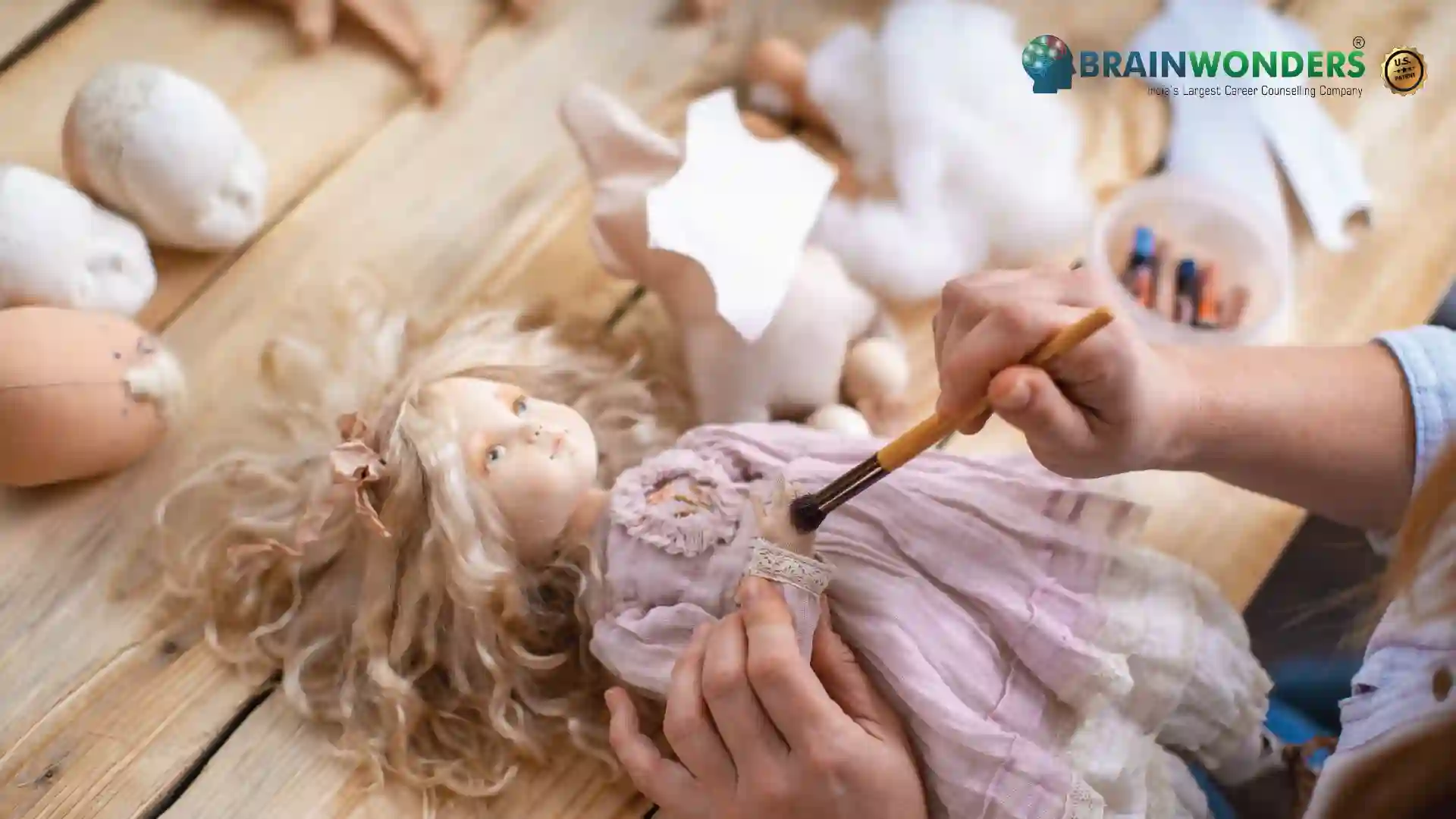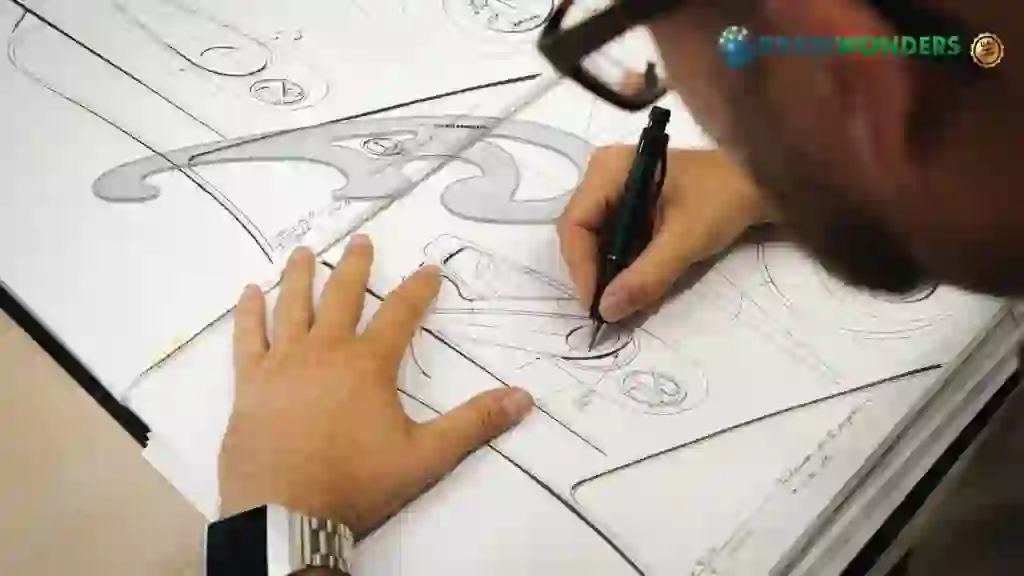How to become a Model Maker (Metal and Plastic)
Overview, Courses, Exam, Colleges, Pathways, Salary

Overview
Who is Model Maker (Metal and Plastic) ?
Model makers set up and run machineries such as lathes, milling and engraving machines, jig borers, drill presses, punch presses, or band saws to build and create functioning prototypes of metal or plastic products. They take an idea from drawings, plans, photographs, and lists of figures or specifications to make three dimensional (3D) full-size and scale models (or mock-ups) of landscape, engineering, architectural, automotive, and other industrial designs using materials like metal, wood, plastic, clay, card, resin and plaster. The models are used for information and preliminary designs or blueprints to bring a concept into reality and assist designers in visualising how a project will look or work even before it is finished.
Typical day at work
What does Model Maker (Metal and Plastic) do?
- Review blueprints, drawings, and sketches to determine dimensions of the material, equipment needed, and operation sequences
- Check and test products to ensure compliance with requirements, using appropriate measuring instruments or circuit testing equipment
- Drill, countersink, and ream holes for bolts, screws, and other fasteners in parts and assemblies, using power tools
- Cut, shape, and form metal parts, using lathes, power saws, snips, power brakes and shears, files, and mallets
- Establish and operate equipment for the manufacture of prototypes or models
- Design and build tools, dies, molds, jigs and fittings, or change existing tools and equipment
- Rework or modify model or parts of the system as needed to confirm that products meet requirements
- Grind, file, and sand parts to completed dimensions
- Program computer numerical control (CNC) machines to produce parts of the model
- Use measuring instruments and drawing or scribing devices to lay out and mark reference points and measurements on materials
- Align, attach, and join components, using screws and bolts or by welding or gluing
- Produce model parts using software or hardware such as computer-aided design (CAD) and computer-aided manufacturing (CAM)
- Assemble mechanical, electrical, and electronic parts in models or prototypes with hand tools, power tools, and manufacturing machines
- Consult and discuss technical issues with engineering personnel, and propose product modifications
- Document requirements, production processes, and final measurements of models to be used in setting operating standards and procedures
- Address briefing with and consult designer or customer by looking at drawings, drafts or samples about specifications
- Illustrate changes or initial ideas using freehand drawing skills or computer-aided design (CAD)
- Create working models with moving parts using electronics or mechanical methods
- Complete the model with using paint, varnish, and other finishes
- Meet local or national design standards
- Set-up, adjust, repair and troubleshoot machines which produce plastics products
- Use computerised techniques like laser cutting or 3D printing to get the right size and shape for components of the model.
Abilities and Aptitude needed
What are the skills, abilities & aptitude needed to become Model Maker (Metal and Plastic)?
- Along with creativity, a model must possess the ability to juggle many work tasks together efficiently and promptly. One must have creative thinking with problem-solving abilities to execute a well-crafted idea. In addition, they need good communication skills, both verbal and written form.
- One must also be skilled in presentation and the use of specialised graphic design, computer software necessary to prepare designs. Another technical ability, like using construction tools, reading blueprints, drawing set sketches, and constructing set models, is also essential.
- Since model makers have to handcraft products, thus must have adequate manual dexterity abilities to safely and efficiently use tools and materials to create the models. Thus, aspiring model makers must also have an incredible eye for detail and careful equipment monitoring.
- They must also possess knowledge of the materials and supplies, such as metals and plastic, with their practical applications and unique challenges they choose to work with and make their products.
- A successful model maker must have the ability to visualise a concept, judge, and choose appropriate colours and designs that translate the ideas into illustrations. In addition, it will necessitate you to make full use of your creative capacity, ingenuity, and aesthetic expression, as they will be required to change their style if necessary. As a result, they must be adaptable and open to criticism.
- They must have physical stamina because they may be on their feet for an extended period. They should also be adaptable enough to function in a variety of settings. They must manage time and prioritise tasks effectively while maintaining the quality of work.
- They must also possess the abilities of self-promotion and self-motivation and the ability to work to deadlines. Lastly, one needs to know basic business know-how and be good at communicating and negotiating with clients.
Salary
Salary for Model Maker (Metal and Plastic)?
Salary of Model Maker (Metal and Plastic) is as follwows :
- Minimum Monthly Salary for an Entry-Level Model Maker (Metal and Plastic): The starting salary for an entry-level Model Maker specializing in metal and plastic can vary based on location, type of establishment, and expertise. In India, novice Model Makers might earn approximately INR 15,000 to INR 25,000 per month as they embark on their careers, honing their skills in crafting detailed prototypes and models.
- Maximum Monthly Salary for Experienced Model Makers (Metal and Plastic): Experienced Model Makers, particularly those adept in creating intricate models using metal and plastic materials, leading projects, or specializing in specific industries, have the potential to earn a higher monthly salary. Their earnings could range from approximately INR 40,000 to INR 1,00,000 or more, reflecting their advanced model-making skills and significant contributions to various fields.
- Annual Salary Range for Junior and Accomplished Model Makers (Metal and Plastic): With limited experience, Junior Model Makers might anticipate a yearly salary ranging from approximately INR 1.8 lakhs to INR 3 lakhs. As Model Makers accumulate substantial expertise, gain exposure to diverse projects, and excel in their craftsmanship, they can aspire to an annual income from INR 4.5 lakhs to INR 12 lakhs or beyond.
- Highest-Paying Job Opportunities and Scope: Lucrative employment opportunities for Model Makers (Metal and Plastic) are often available in industries such as manufacturing, automotive, aerospace, product design, architecture, and entertainment. Model Makers specializing in creating accurate prototypes, architectural models, industrial designs, and specialized components have a higher earning potential. The scope of model making is promising, as Model Makers play a pivotal role in translating concepts into tangible, visually appealing models. With the increasing demand for prototyping, design validation, and creative visualization in various sectors, the need for skilled Model Makers is expected to rise significantly. This growth offers substantial opportunities for career advancement, specialization, and artistic expression within model-making in metal and plastic materials.
Ready to become a Model Maker (Metal and Plastic) ?
Take the world’s best assessment test !
Take a TestPathways
How to become an Model Maker (Metal and Plastic)?
Entrance Exam
Entrance Exam for Model Maker (Metal and Plastic) ?
Courses
Which course I can pursue?
Best Colleges
Which are the best colleges to attend to become an Model Maker (Metal and Plastic)?
Industries
Which Industries are open for Model Maker (Metal and Plastic)?
Model Makers (Metal and Plastic) possess specialized skills in creating accurate and detailed prototypes and models using various materials. These skills are valuable in industries that require precise design, prototyping, and visualization. Here are some sectors that often need the expertise of Model Makers in both metal and plastic:
- Manufacturing and Production: Model Makers play a crucial role in the manufacturing industry, creating prototypes and models for new products, machinery, and equipment before mass-produced.
- Automotive and Aerospace: Model Makers contribute to the design and development of vehicles, aircraft, and spacecraft by creating scale models of components, prototypes, and conceptual designs.
- Product Design and Development: Design firms and companies developing consumer goods rely on Model Makers to create physical representations of product concepts, allowing for visualization and testing.
- Architectural and Construction: In the architectural and construction industries, Model Makers create detailed scale models of buildings, structures, and urban planning projects.
- Industrial Design: Model Makers collaborate with industrial designers to bring product concepts to life, ensuring functional and aesthetic accuracy.
- Entertainment and Film Industry: Model Makers create props, miniatures, and models for movie sets, special effects, and theme parks, enhancing visual storytelling.
- Consumer Electronics: Model Makers contribute to developing electronic devices by creating prototypes and models for testing and design validation.
- Toy and Game Design: Toy companies rely on Model Makers to create prototypes and models for new toy designs and games.
- Jewellery and Accessories: Model Makers in this industry create prototypes for jewellery, watches, and fashion accessories, ensuring design accuracy and feasibility.
- Medical Device Development: Model Makers contribute to creating prototypes and models for medical devices, surgical tools, and equipment.
- Museum and Exhibition Design: Model Makers work on creating exhibits, displays, and scale models for museums, science centres, and educational institutions.
- Art and Sculpture: Model Makers collaborate with artists to bring their sculptures and installations to life, using metal and plastic materials.
- Research and Development: Model Makers contribute to developing experimental equipment, scientific instruments, and prototypes in research institutions.
- Prototyping Labs and Fab Studios: These facilities specialize in rapid prototyping and fabrication, employing Model Makers to create accurate models using advanced technologies.
- DIY and Hobbyist Market: Model Makers may offer their skills to hobbyists, DIY enthusiasts, and small-scale entrepreneurs creating custom designs and prototypes.
internship
Are there internships available for Model Maker (Metal and Plastic)?
Internship opportunities for aspiring Model Makers (Metal and Plastic) provide hands-on experience creating prototypes, models, and designs using various materials and techniques. While specific internships may vary based on location, industries, and organisations, here are potential avenues for apprenticeships for those interested in becoming Model Makers in the field of metal and plastic:
- Manufacturing Companies: Companies that produce metal and plastic products, machinery, or consumer goods may offer internships for model making, where interns can work on creating prototypes and mock-ups.
- Automotive and Aerospace Industries: Internships in these industries may involve creating scale models of vehicles, aircraft components, or prototypes for testing and design purposes.
- Product Design Firms: Design studios and product development companies often seek interns to assist in creating physical models of new products and concepts.
- Architecture and Construction: Interns can work with architectural firms to create scale models of buildings, structures, and urban planning projects.
- Toy and Consumer Goods Companies: Internships may be available in companies that design and manufacture toys, electronics, appliances, and other consumer products.
- Jewellery and Accessories Design: Interns in this field may work on creating metal and plastic models for jewellery, watches, and fashion accessories.
- Prototyping and Rapid Manufacturing Labs: Interns can gain experience in labs or facilities specialising in 3D printing, CNC machining, and rapid prototyping.
- Engineering and Research Institutions: Engineering departments and research institutions may offer internships involving the creation of experimental models and equipment.
- Medical Device Companies: Interns can work on creating prototypes of medical devices, equipment, and surgical tools.
- Special Effects and Entertainment Industry: Internships in this field may involve creating models for movie sets, props, and special effects.
- Museum Exhibits and Displays: Interns may work on creating scale models and exhibits for museums, science centres, and educational displays.
- Art Studios and Galleries: Interns can assist artists in creating metal and plastic sculptures and art installations.
- Consumer Electronics: Internships may be available in companies producing electronics, where interns can create models for product design and testing.
- Industrial Design Workshops: Workshops specialising in industrial design and model making may offer internships to gain practical skills.
- Hobby and DIY Businesses: Small businesses or startups focused on DIY kits, model-making supplies, or hobbyist products may provide internship opportunities.
Career outlook
What does the future look like for Model Maker (Metal and Plastic)?
- Model makers will usually work with others in the initial phases of their job. Once they have the design, they work alone in their own shop, workshop, or studio to create three-dimensional models.
- As a self-employed model maker, one could be an agent for other model makers. Most of them work on a contractual basis.
- Model makers work with industrial research, design and development laboratories, or companies that undertake engineering, construction, topographical models, promotional displays, stage props, and sculptures.
- Model makers are essential in the artistic and design process for many different fields.
- Architectural design, to produce scale models of initial design or blueprint to help see the areas of improvement in the project
- Product design, to develop new product models for design testing before production starts. Visual effects design, develop models used in special effects or to illustrate set designs in TV, film, and theatre.







